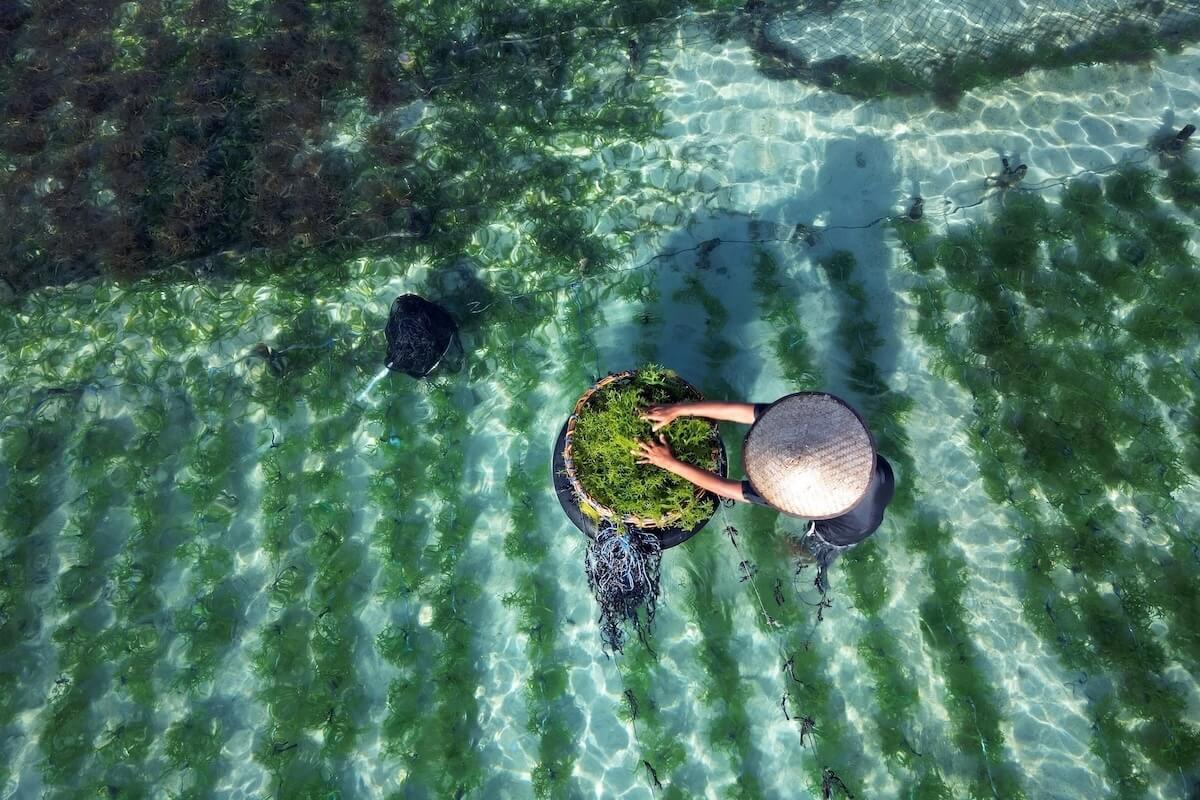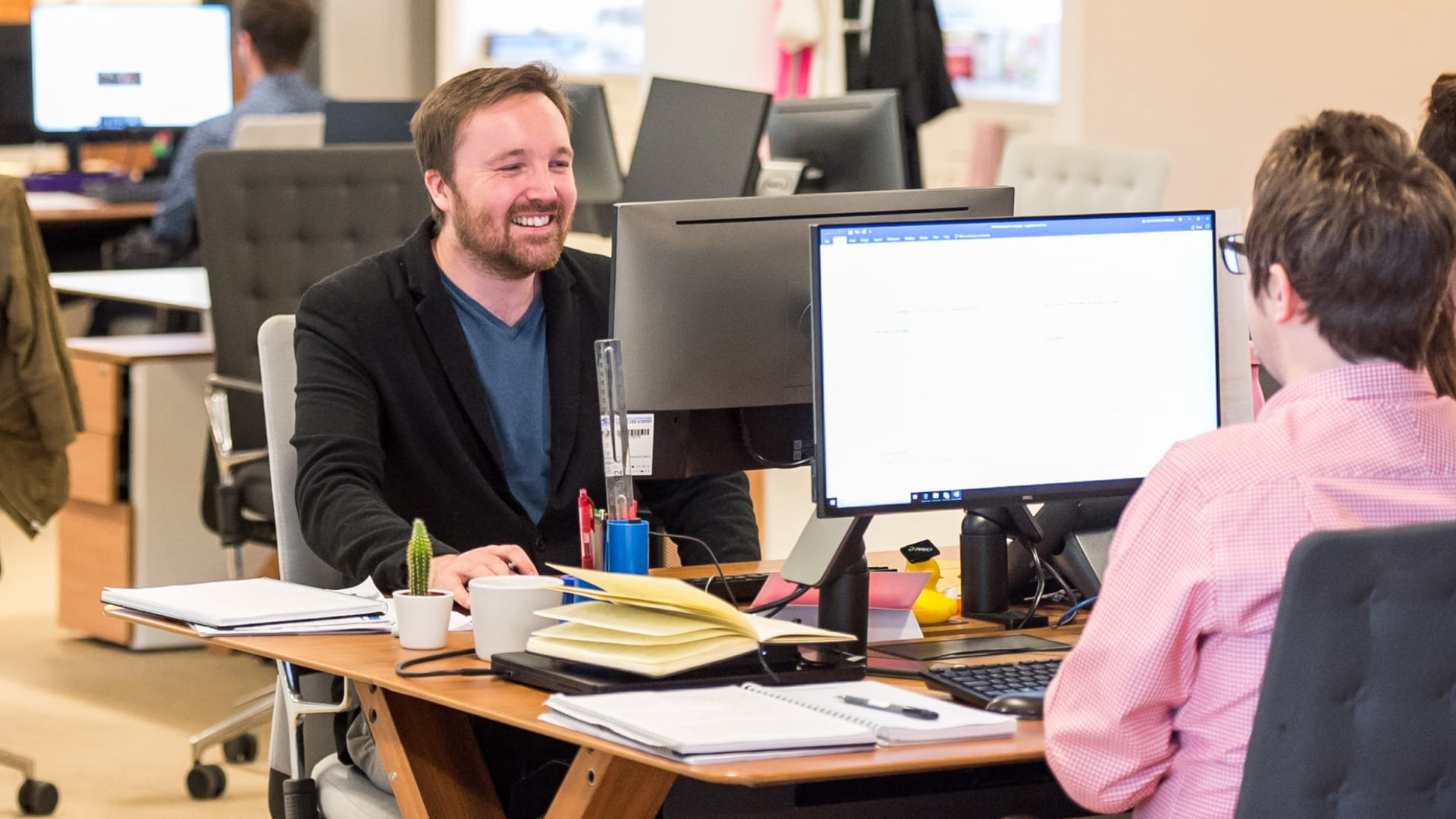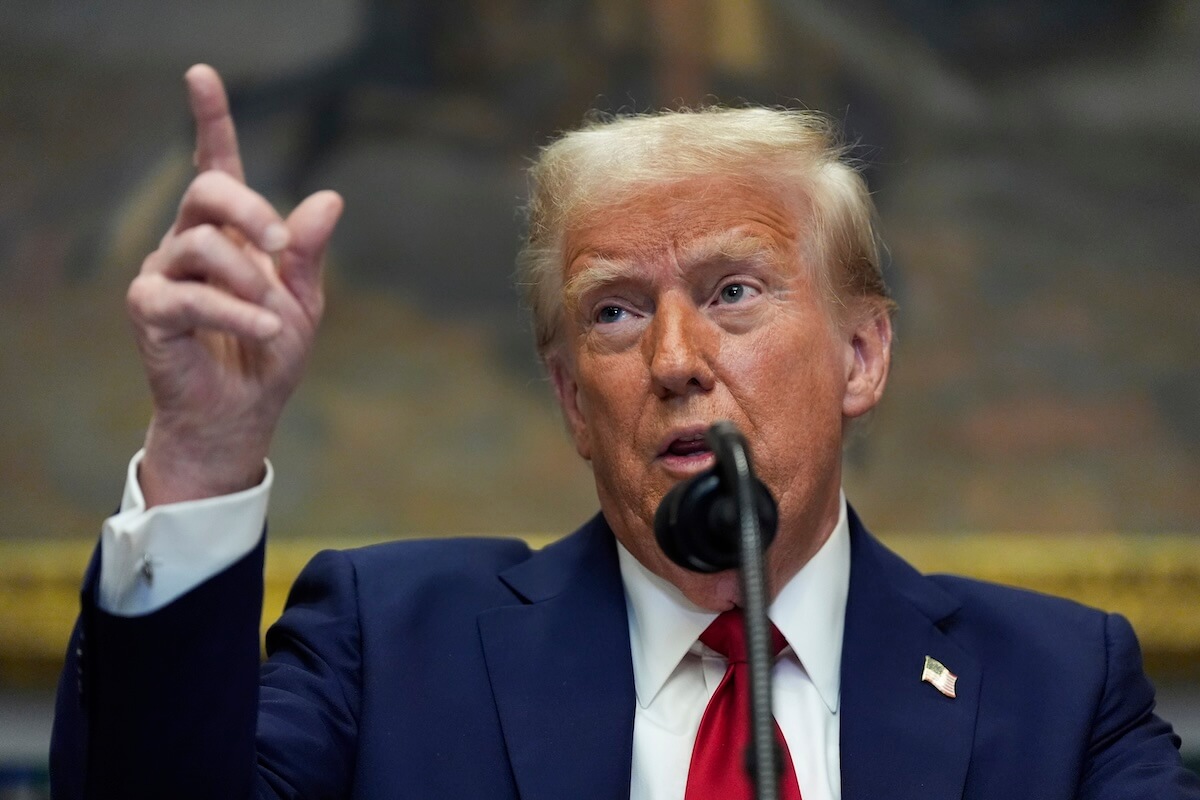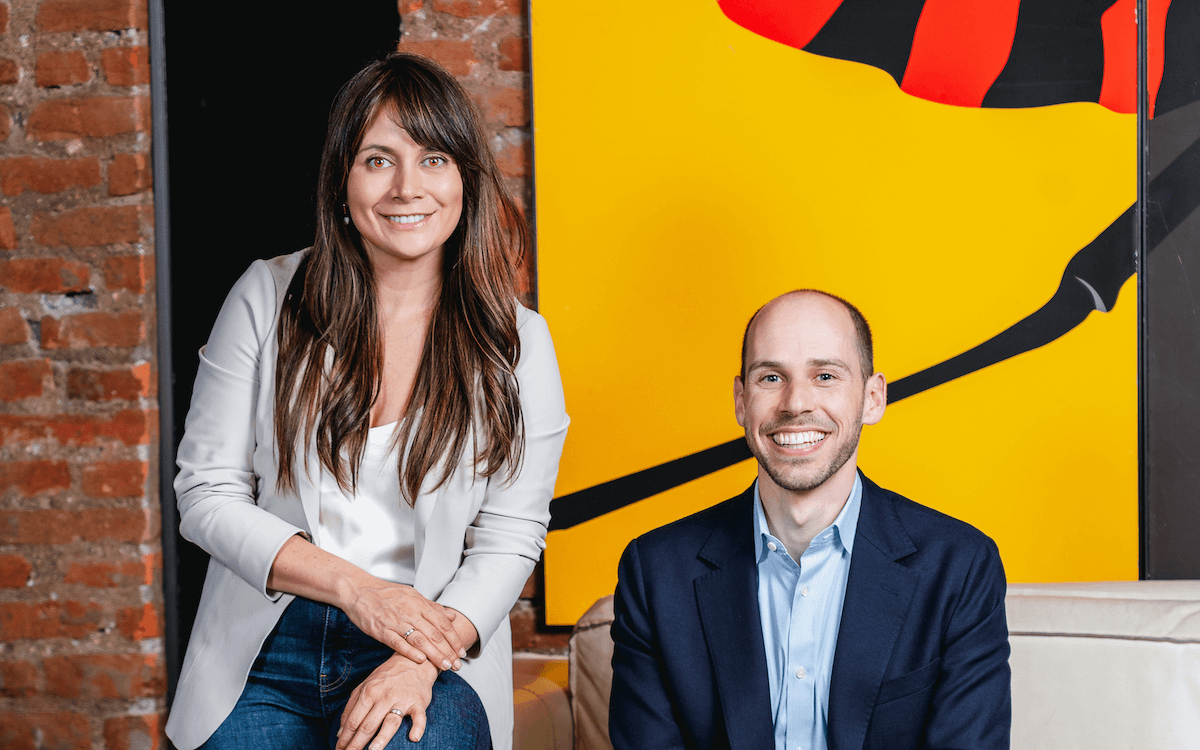ImpactAlpha, March 13 – “By expanding both coursework and hands-on experiential learning opportunities at the graduate and undergraduate levels, we can expect a larger, stronger cohort of impact investment professionals to emerge,” wrote the GIIN’s Amit Bouri in his call for ideas for mobilizing and developing talent for impact investing.
More than a dozen contributors responded with examples of pioneering MBA programs already offering academic training in impact investing and sustainable finance as well as initiatives that give would-be practitioners a chance to build portfolios, diligence venture investments and work with entrepreneurs (see more responses.
Sure, the impact investing talent pipeline still is far from robust. But these Agents of Impact aren’t letting perfect be the enemy of the good.
Read on to hear from Bridges Fund Management’s Brian Trelstad, Liquidnet for Good’s Brian Walsh, Wharton Social Impact Initiative’s Nick Ashburn, Intelligent Impact’s Aunnie Patton Power, Good Capital Project’s Sharadiya Dasgupta, Minnesota Council on Foundations’ Susan Hammel and The Legacy Fund’s Joe Milam.
And catch up all of ImpactAlpha’s talent roundups:
- “Broaden the talent pool and cultivate an ‘impact mindset’ as a competitive advantage”
- “Driving ‘impact-career alpha’ and upgrading the talent pipeline”
In their words:
Bridges Fund Management’s Brian Trelstad: There’s no substitute for experience
Amit does a good job of identifying the need for a different mind-set and the limits on the existing system to produce people with the requisite financial skills, impact orientation and beneficiary empathy to truly thrive as an impact investor. Curiously, he misses a few of the leading programs that have made significant strides in recognizing the gaps in the marketplace:
- ANDE’s summer associate training. The training provides a deep dive for mostly MBA and policy students working in impact investing and small and medium-size enterprise finance with a crash course in impact and investing before their summer internships. This program taps into the current tsunami of interest in internships with a just in time training that is helpful.
- The MIINT program. The partnership between Bridges Fund Management and Wharton, works with over 600 students a year studying at 32 of the leading MBA and policy graduate programs around the world to offer a hands on impact investing training that complements the sparse offerings at many graduate schools. This program recognizes that there are not currently enough faculty capacity to teach given the student demand.
- The Impact and Sustainable Finance Faculty Consortium. The consortium is a promising and emerging network of faculty at schools around the world who are exchanging curricula and research that is advancing scholarship on impact investing and the practice of teaching.
- No substitute for experience. Programs like Capria, a fund of funds model invests heavily in building the skills of new fund managers in emerging, or the Acumen Fellows programs, are linking the next generation of talent with the opportunity to invest in and support high-impact investments
Finally, there are a lot of my two least favorite words in the English language throughout Amit’s essay: must and should. If talent is such a priority on the GIIN’s road map, my question to Amit would be, what is the GIIN going to do about it? Clarity of where others might play is helpful, but leadership by the GIIN by offering specific initiatives that will address many of the talent pipeline challenges is likely to be more effective in advancing the field’s talent agenda than telling others what they should do.
Wharton Social Impact Initiative’s Nick Ashburn: Train students to think like an impact investor
At the Wharton Social Impact Initiative (WSII), we focus on two core activities in impact investing: 1) building the talent pipeline and 2) building the evidence base. For us, this makes sense – it’s what we do in academia, and they are highly interrelated activities that help inform the other. As our research with Wharton faculty uncovers what works in the field, and we can then provide that information to students in our programs. In turn, our educational offerings allow for innovation and learning that can then inform our research.
We’re delighted to provide a suite of offerings to students at Wharton and Penn, including: an impact investing course taught by Dr. Chris Geczy; our impact investing venture program, Wharton Impact Venture Associates (WIVA); and hands-on consulting opportunities through the Wharton Impact Student Experience (WISE) Fellowship.
And though our priority in building the talent pipeline is for our Wharton constituents, we also find ourselves providing educational opportunities to a growing number of schools around the world.
The MBA Impact Investing Network & Training (MIINT) program. For over six years now, we’ve loved collaborating with Bridges Fund Management to co-produce the MBA Impact Investing Network & Training (MIINT) program. Over MIINT’s history, we’ve worked with more than 2,000 students from around the world to augment what they’re learning in the classroom – what we assume Amit is referring to as “traditional finance theory” – to start integrating impact considerations into their investment decision-making. In other words, training students to “think like an impact investor.”
Total Impact Portfolio Challenge. This past year, we also launched the Total Impact Portfolio Challenge (TIPC) with the Good Capital Project. We created this program in response to market demand (from both students and industry) with the understanding of two principles: 1) while we’re doing a good job training students to think like impact investors in the early-stage venture process with MIINT, the majority of impact investing jobs aren’t in early-stage venture capital and 2) venture investing isn’t where most of the world’s capital flows. So we designed a challenge for students to try to integrate impact across all asset classes. What we’ve learned: Access to reliable data remains a big issue in making effective investment decisions (research, anyone?), and it continues to raise philosophical questions around where “impact” can occur (i.e., can you actually have an impact in public markets?).
Broadening the pipeline. We work with more than 40 schools from around the world across both programs– from University of Hawaii to Gettysburg College and Columbia University to SDA Bocconi in Italy – and it’s a tricky balance to effectively meet the learning needs of all of our students. Our work with other schools also reinforces a real challenge facing the impact investing industry: diversity and inclusion. Our programs are intentionally designed to provide participants a leg up for impact investing jobs, and yet we realize that many other students (at land grant universities, historically Black colleges and universities, minority-serving institutions, universities in emerging markets) who aren’t in our programs may not even be exposed to these opportunities, and that’s likely a major problem as the industry continues to develop.
I hear Amit’s call loud and clear, and I hope that we continue to grow, improve, and expand our offerings at Wharton Social Impact. We look forward to working with a variety of stakeholders from across the industry to build the evidence base and build the talent pipeline for impact investing, always with a lens of inclusion.
Intelligent Impact’s Aunnie Patton Power: Listen to the next generation of innovative financiers
In the last year, I’ve taught over 650 students face-to-face in courses at the University of Cape Town, the London School of Economics and the University of Oxford and had over 1,500 enroll in my Innovative Financing MOOC on Coursera.
As part of my lectures, I teach a set of curricula that helps students understand how to create mechanisms through a human-centered design approach that focuses on solving for specific issues that are identified by those experiencing the problem. During my course, I reference over 47 different innovative financing mechanisms as examples to inspire students.
In return, I am privileged to be privy to the ideas coming from these students that continue to inspire and motivate me to believe that the best in innovative finance is yet to come. Here are just a few examples of where we could be heading from the next generation of innovative financiers.
1. A Digital Data Cooperative Fund seeded by data driven impact investors with a DAO (decentralized autonomous organization) operating structure where impact data is collected centrally and available to participating organizations and fee-paying members. There is a potential here to tag the data to individuals and initiate micro-payments when it is used.
2. A community cooperative funded and securitized through livestock that can make micro-loans available to participating households.
3. A U.S. food waste innovation fund dedicated to investing in scaling technologies aimed at reducing food waste through prevention, recovery and recycling and funded by a mix of federal government, municipal government, philanthropic and impact investment capital.
4. A graduate employability platform that partners with government and corporates to fund loans for students to obtain priority micro-credentials that are verified via the blockchain.
5. A Black Tax Eradication Model, a community asset manager / platform for young professionals to save, invest in income producing community development projects (such as real estate), build their credit scores, apply for mortgages, buy other types of financial products and exchange advice and experiences around finances peer to peer. (Black Tax is a term used in South Africa to denote the cost that young black professionals face in supporting their extended families upon employment).
6. A micro-credit insurance product that provides a bi-directional payoff to consumers, meaning that in times of risks being realized the policy will pay out against claims and when there is surplus in the fund, it will be distributed to consumers based on their premium contributions.
7. A conservation investment fund that is allocated via micro-loans to individuals near conservation areas to start businesses that can be incorporated into eco-lodge supply chains. Lodges could be further incentivized by tax breaks based on the integration of these businesses into their supply chains.
8. A blended fund to build student housing that utilizes outcome payments from scholarship providers based on improvement in academic performance and graduation of renters versus a control group to increase funders returns and align incentives to provide a conducive learning environment for learners.
9. A low-cost loan program for domestic workers to finance education, housing and small business investment in their communities that uses savings and a partial guarantee from employers to reduce risk.
We are still at the early stages of designing instruments that will help us facilitate the flow of capital at the scale required to tackle the SDGs, but I’m increasingly hopeful about the capacity of the human capital coming through the pipeline.
In addition to founding Intelligent Impact, Aunnie lectures on innovative finance at the University of Cape Town, the University of Oxford and the London School of Economics.
Good Capital Project’s Sharadiya Dasgupta: Building impact-lens portfolios
The Total Impact Portfolio Challenge lays the groundwork for the next generation of financial leaders who understand the interdependence of profit and purpose. Wharton Social Impact Initiative and Good Capital Project believe that all aspiring investment professionals will soon need to have ESG and impact as part of their fundamental financial analysis tool kit — even if they are not heading for a dedicated impact investing career track.
- On ramp. The Challenge will provide aspiring wealth managers, portfolio managers, and investment advisors an on-ramp into portfolio construction with an impact lens across asset classes, and the risk-return spectrum.
- Traction. In Year 1, we have had 121 students from 19 universities participate. We received applications from teams representing an array of schools – from Columbia and Yale to University of Minnesota and Gettysburg University; reaffirming yet again the widespread interest in impact investing across campuses. Most – if not all – of the applicants come from a traditional finance background and are looking to join mainstream financial firms upon graduation. They view this as part of an hands-on experience into portfolio management with an added impact overlay, rather than pursuit of “doing good”.
Brian Walsh, Liquidnet for Good: First decipher “impact”
Efforts such as the Impact Management Project, the Sustainability Accounting Standards Board, and the GIIN’s own Impact Reporting and Investment Standards are helping to drive consensus around how we anticipate, measure, report, and manage the non financial impact of enterprises and other investments.
Yet too often it can appear that impact is in the eye of the beholder. Until we have greater clarity and alignment on what we mean by appropriately accounting for impact – the content that we seek to train/upskill investment talent on – having the best training and certification programs in the world won’t be enough. We need more industry leadership to help all market participants decipher demonstrable impact from subjective marketing hype.
Minnesota Council on Foundations’ Susan Hammel: Reach out to diverse new talent
Women, people of color, Native Americans, rural and socio-economically challenged people don’t pursue careers in finance because they’re not aware of the opportunities and they don’t have connections nor access to people in the industry. The few that do join the financial industry are quickly turned off by the prevailing culture, workaholic norms, devotion to face-time, if not outright harassment. The ones that remain are quickly bored because the industry doesn’t address issues they care about deeply.
ESG and other forms of impact investing provide a much needed entry point to entice diverse individuals into the financial sector. The possibility to make a difference for your community and earn a decent or even a very good living makes a compelling case for new talent which the industry desperately needs. Those financial firms that are serious about making a positive social and environmental impact will win the best new talent. In turn, the new entrants will attract more diverse people like themselves. As leaders in the movement it’s our responsibility to reach out to diverse new talent, mentor them, sponsor them, and get out of their way when the time comes.
The Legacy Fund’s Joe Milam: Impact investors needs to do more… investing
Because impact investing needs more investing to be done, there needs to be more people involved that actually have investing experience.
Less talking, training, collaborating, standardizing and defining.
Investing involves risk. There are basic techniques that can be used to manage risk. Like diversification. Don’t over-analyze any one deal. Perfect is the enemy of good. Invest in a basket of things that fit your criteria. Equal weight the investments (Index fund-like structure), monitor, iterate, course correct, and do it again.
This will create experience, knowledge and momentum more than another collaborative conference discussion about what impact needs more of. It is already clear.












